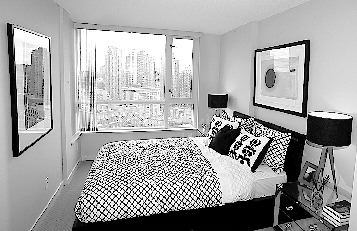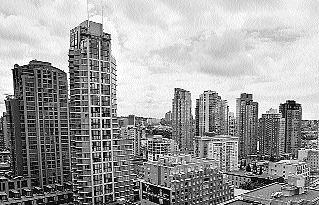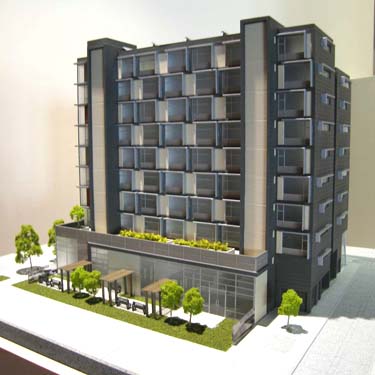There’s a growing number of listings, but don’t expect fire sales
Gillian Shaw
Sun

Montague Harbour — $3 million On Galiano Island, right around the corner from Active Pass, it includes transient and long term moorage, a general store, restaurant, jayaj rentals, and a stoop for the bus to the pub.

John Henry’s Marina –$2.4 million Located on Garden Bay, it includes a fuel dock, general store, liquor store and post office, plus a lunch counter, ice cream parlour and Internet cafe.

Fulford Harbour Marina — $2.5 million 1.94 acres on 650 feet of waterfront with two-storey commercial building on southern end of Salt spring.

Port Browning Marina — $5.9 million Pender Island 5.33 acres with 80-berth marina and zoned for development. It has a pub, restaurant and pool.
Want a good deal on a marina? Now could be the time, with the “for sale” list stretching from the southern Gulf Islands to fishing resorts up the coast.
But don’t expect fire-sale prices, despite skyrocketing fuel costs, a strong Canadian dollar, and a weakened economy across the border all contributing to declining tourist visits to Canada.
Marinas have a lock on oceanfront, a consideration that gives them a value beyond their business operations. And with moorage waiting lists stretching into years, even if daily traffic slows there will always be boaters looking for long-term stays.
However, Rudy Nielsen, president of Landcor Data Corp. which tracks B.C.’s real estate deals, said nervousness in the economy could have some owners deciding to cash out before cash flow falters.
“I’ve been in the business, and there are always marinas for sale,” he said. “It is like an apartment — you fill the whole thing with tenants, and then sell it based on the cash flow.
“You try and sell them before there’s a bad time and all of a sudden you have empty spaces. There are a lot of people who are nervous out there.”
It’s not nerves, but rather a lifestyle choice that is behind Montague Harbour Marina’s billing of a “once in a lifetime opportunity” for potential buyers to tender offers.
Marilyn Breeze, who runs it while her husband Graham is in Seattle, said she’s ready for a change after eight years of ownership.
“I understand that virtually everything is for sale up the coast. That’s what I understand from the marinas,” she said in an interview.
Montague Harbour Marina is on Galiano Island, alongside a provincial campground and in a well-protected natural harbour that, combined with its gas docks, a restaurant and a store, draws people to its docks. It’s also close to a number of water-access-only summer homes, so docking spots are in demand.
“It is one of the best harbours, and it is one of the best locations,” said Breeze. “We have had a lot of interest, and we want to sell it.”
Breeze said the family won’t list the marina with a broker but will sell it on their own, at a price close to $3 million.
With moorage in short supply all along the coasts, Breeze said she could fill her marina with annual moorage, but instead keeps spots open for seasonal transient visitors.
“I think the further north you go, if people are relying solely on guest moorage, on the transient moorage, then they have a problem,” she said. “When the fuel prices went up and the recession started getting bad for the Americans, we still did okay because they’ll come over the border to the nearest place.”
For each of the marina’s past two fuel deliveries and a diesel delivery, prices are up 15 cents a litre, Breeze said. For the mega yachts, the added fuel costs might be small change, but not for the less-well-heeled boaters.
“The people it knocks out for us are the people who come out for the day from Crescent Beach. They come out in their speed boat for the day for lunch. Those people will probably be thinking twice about it,” she said.
Real estate investment consultant Ozzie Jurock knows firsthand just how rising fuel has impacted the cost of running a boat. Two years ago, it took $1,000 to fill the tank on his 46-foot Carver motor vessel Proper Tee. Now he said it costs $2,000, and if fuel prices double again he could be facing a $4,000 fill-up.
“I am a boater. I live on the water in the summer. And last year, the marinas I was at in Desolation Sound were saying there are fewer Americans here,” he said. “That seems generally to be the trend.”
Jurock said a marina can be a good investment if you like the lifestyle.
“If you are young and you like the lifestyle and you don’t mind the hours, I think it can still be a good income,” he said. “The hours to operate a marina are something else — it’s like a motel.”
Added services are important to success, he said, like whether or not there’s a store and a coffee shop as well as fuel.
The priciest marina listing in the Gulf Islands is Port Browning on Pender Island, a 5.33-acre waterfront parcel with an 80-berth marina that is listed at $5.9 million. It has zoning approval for 39 units, a key factor in the pricing, according to Emil Chervatin, an agent with Pemberton Holmes who has the listing.
“The thing with Port Browning is we are not really just trying to sell the marina,” Chervatin said. “The value is in the land that can be developed. The marina is more an amenity.
“I don’t think anyone is going to buy a marina for $6 million. It is more about what can be built there.”
Richard Osborne, president of LandQuest Realty Corp., said that while the higher price of fuel won’t hurt travel by larger yachts, other boaters may not go as far as they otherwise would.
“The big boats that travel between Seattle and Alaska, the serious big guys, they’re not going to stop because of the price of fuel,” he said.
“The theory is that [other] people won’t go as far, and they may stay at marinas longer. People aren’t going to quit boating, but I think sailboat sales are going to skyrocket.”
Osborne’s company recently sold the Naden Lodge, a commercial sports fishing lodge on the oceanfront in Masset Harbour in the Queen Charlotte Islands listed at close to $1 million. LandQuest is also listing two other marinas — one in the Gulf Islands, and one on the Sunshine Coast — as well as Rivers Lodge, a floating fishing facility, at a price tag of $1.695 million in the Rivers Inlet region of B.C.
“The advice we are giving people, because we are in the kind of market we are in, is if you want to sell it you absolutely have to list it at the right price,” said Osborne. “There is no use being out there looking for pie in the sky. If it isn’t priced right, you can’t sell it”
Osborne said since operating a marina is a lifestyle choice, the slowing of the market may have made sellers decide now is the best time if they want to get out.
“Maybe people have realized the market has peaked, and they think maybe they should have sold a year or two ago. But now there is no use holding it because it’s not going to continue to go up like it has been,” he said.
“People maybe weren’t selling because the price of real estate was appreciating so fast they thought, ‘I might as well stay here and ride things out’.”
Fulford Harbour Marina, another LandQuest listing, almost sold recently, but the deal was delayed when a winter storm caused damage that had to be repaired and the buyer moved on to another waterfront property.
Jason Zroback, who has that $2.5 million listing, said if just the business operations of a marina are taken into consideration, it can be difficult to find one that makes good financial sense. But the value of the waterfront real estate, which has risen far faster than revenue from operations, gives them investment value.
“In some cases, there is more upside to a property than strictly the operations of a marina,” he said. “I guess the sentiment for these types of properties is that they are desirable, they are prime waterfront real estate, it is a supplemental income, and a safe place to park your money.
“We know there is a huge shortage of dock space around the entire coast. Places are full up, and I don’t think that’s going to go away.”
ALL SHIP SHAPE
Number of marinas in British Columbia: 824
2004: 19 sales
2005: 27 sales
2006: 21 sales
2007: 22 sales
2008 first quarter: 6 sales
Source: Landcor
© The Vancouver Sun 2008










